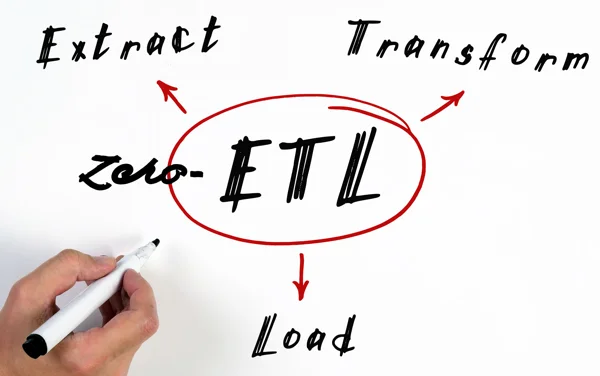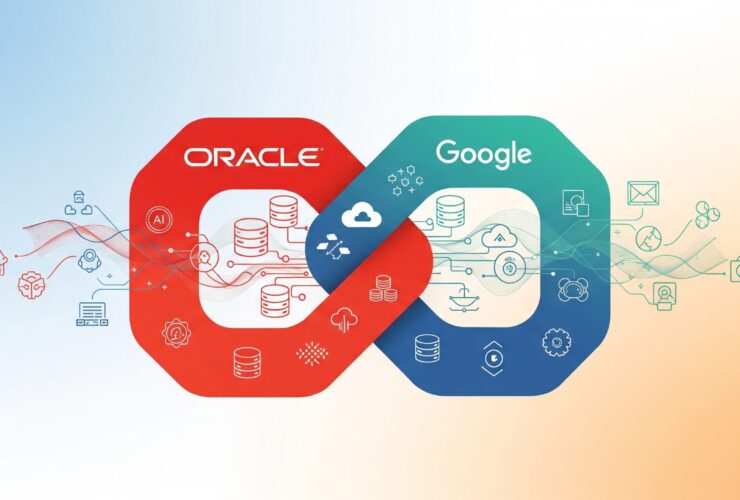Zero-ETL: What is it and what Oracle products support it

Businesses are constantly finding themselves increasingly reliant on data ingestion, big data, analytics, and following traditional ETL (Extract, Transform, Load) processes; which at times can be a bottleneck to timely business functions. At AWS re:Invent 2023, Amazon recognized this and announced the concept of Zero-ETL. Other companies, such as Snowflake and Salesforce followed suite by launching features that further modernized data integration.
In doing research on Zero-ETL and closer scrutiny, the concept of Zero-ETL is more aligned with ‘zero integration’ rather than the removal of ETL from business processes.
So what is Zero-ETL?
Zero-ETL is a type of data integration that doesn’t involve the use of traditional approaches of extract, transform, and load (ETL). Unlike traditional methods that involve ETL and loading data between systems, Zero-ETL moves data directly from one system to another. It is a a no-frills approach to data transfer, eliminating any need for intermediate steps to clean or modify the data. In essence Zero-ETL is data replication, ensuring almost instant data transfer without the processing hurdles.
Zero-ETL is becoming popular?
The concept of Zero-ETL has become popular in the data management domain, in part, by the prevailing belief that it acts as a potential substitute for traditional ETL. This perspective have organizations and industries, leading many to consider Zero-ETL as the “next step” or even a “replacement” for ETL.
Traditional ETL processes, with their structured approach to ETL (extracting, transforming, and loading), have been foundational in data integration for decades. ETL enabled businesses to harmonize diverse data sources, making them ready for deeper analytical tasks, AI modeling, and ML implementations. With the introduction of zero ETL and its focus on direct data transfers, there’s a new narrative – emphasizing immediate, transformation-free data transfers. This narrative is attractive to many, especially those looking for simpler and quicker data replication solutions.
Is the nomenclature of Zero-ETL misleading?
With the nomenclature of Zero-ETL, the marketing term is catchy and can quickly lead to discussions; however, this is also a point of contention. The term “Zero-ETL” is more like “Zero-EL.” The technology that embodies the concept of “Zero-EL” concentrates on the extraction and loading stages of the process while sidestepping the transformation step of the process.
With the advancement of technologies, the trend of reducing unnecessary data movement is becoming apparent; however, data movement is still required! The technologies and procedures for extracting and loading data are ever evolving and becoming more simplified; but the transformative aspects remain a significant part of the puzzle before the industry can truly embrace “Zero-ETL”. Transformative processes are integral to shaping and repurposing data for operational and analytical needs.
Benefits of Zero-ETL:
Let’s put aside the catchy marketing terms like “Zero-ETL” for the next few minutes. There is no doubt that the industry is looking for simpler, easier, and efficient way of data movement and data management; there are an array of benefits:
- Speedy Data Transfer – Promptness of data transfers. Emphasis on direct data movement allows for swift data migrations. This facilitates timely insights and promotes swift decision-making.
- Simplified Implementation – Leads to quicker setups, minimizes learning curve, and simplified maintenance; enabling a smoother process for integrating new data sources.
- Cost Efficiency – Capitalize on cloud-native platforms and scalable data integration technologies; leading to cost-effective solution.
- Enhanced Data Quality – the directness of Zero-ETL can lead to more transparent data transfers. When preserving data integrity is crucial, the direct approach can provide a higher assurance of quality; ensuring data remains consistent and reliable.
- Real-Time Insights – data is often available in real-time or near-real-time as long as the data needs little transformation, no cleansing, or augmentation. The prompt availability of data can yield more accurate analytics, optimized AL/ML trianing, and ensuring up-to-date reporting.
In summary of these benefits, Zero-ETL is rooted in these benefits with an emphasis on immediate data replication.
Disadvantages of Zero-ETL:
With every new solution, marketing catch phrase, or technology, there is always drawbacks. Zero-ETL is an exciting “concept” and is making a lot of noise in the data community with data engineers and others; yet it is worth looking at some of the disadvantages of this concept.
- Limited Data Transfer Capabilities – data movement between systems sometime requires intermediate steps; this presents challenges when data requires cleaning, standardization, or complex transformations prior to consumption. Hindering the ability to cater to most data reporting needs.
- Compromised Data Governance – traditionally, ETL solutions are equipped with controls to safeguard and uphold the quality of the data transfers. Zero-ETL leans on the systems that are involved in the transfer to manage the critical tasks.
- Restricted Integration Potential – the Zero-ETL concept is characterized by its direct data transfer between systems; which can be a limiting factor when the systems involved are outside of the particular ecosystem. This confinement can restirict the integration mechanism, potentialy leaving out valuable data sources.
When could Zero-ETL be the right approach?
Like all technologies and concepts that come to market, the efficacy of Zero-ETL hinges on understand the benefits and disadvantages. The two concepts, where organizations and industries could leverage Zero-ETL are:
- Instant Replication:
- Scenario: Organizations resort to defined ETL solutions to transfer data from transactional databases to a central data repository.
- Zero-ETL Application: Zero-ETL can function as a data replication instrument, enabling Change-Data-Capture (CDC) techinques to directly mirror data into a data warehouse.
- Streaming Ingestion:
- Scenario: Organization relies on real-time data inputs from a myriad of sources. Data must be immediatly accessible for analytics purpose without intermediate storage or transformation.
- Zero-ETL Application: Data streaming and message queuing platforms channel real-time data. Integrating Zero-ETL methodology with a data warehouse, data from input streams become immediately available for analytics
Where or what tools does Oracle offer that support Zero-ETL?
In the Oracle eco-system, the underlying concepts of Zero-ETL have always existed within Oracle Data Integration stack. Over time, the associated data integration stack has changed between on-premise and cloud; and the terms that Oracle use are around “data mesh” and many other terms.
The Oracle products that can help organizations enable the concept of Zero-ETL are:
On-premises:
- Oracle GoldenGate (all versions and free)
- Oracle Data Integrator (ODI)
- Oracle Database (converge database)
Cloud:
- Oracle GoldenGate Service (GGS)
- Oracle Autonomous Database (ADW/ATP/AJD)
- Oracle MySQL Heatwave (OLTP and OLAP in same database)
Conclusion:
New terms and technologies emerge on a regular basis and capture the attention of decision-makers and practitioners alike. With all trends, it is critical to evaluate each trend before diving in. Understanding the core functionality, strengths, and limitation of the tools that enable Zero-ETL is vital. Every tool and technique has its place, the key to discerning is how, when, and where to apply them the best. Don’t always buy into the hype and find more of a fit for the concept and use the correct technologies.


